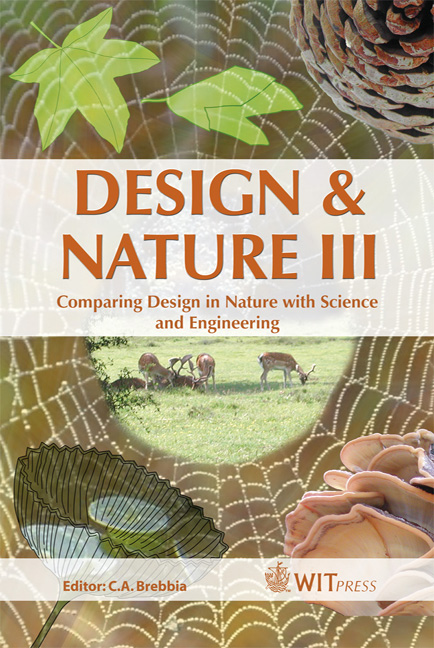Self-healing Processes In Nature And Engineering: Self-repairing Biomimetic Membranes For Pneumatic Structures
Price
Free (open access)
Transaction
Volume
87
Pages
10
Published
2006
Size
1,981 kb
Paper DOI
10.2495/DN060101
Copyright
WIT Press
Author(s)
T. Speck, R. Luchsinger, S. Busch, M. Rüggeberg & O. Speck
Abstract
Self-repairing processes in plants sealing fissures caused by natural growth processes (e.g. in the vine Aristolochia macrophylla) or by artificial injuries (e.g. in the common bean Phaseolus vulgaris) serve as concept generators for the development of a biomimetic coating for membranes of pneumatic structures based on the Tensairity® concept. First results with foam-based biomimetic selfrepairing coatings for technical membranes are very promising. For lesions with nails of up to 5mm diameter, reductions of the air-leakage of two to three orders of magnitude could be achieved. Keywords: self-healing, vines, biomimetics, self-repairing membranes, pneumatic structures, Tensairity®. 1 Introduction Over the last two decades, plants have proved to be a real treasure trove as models for the construction of biomimetic technical structures and materials [1, 2]. One example are self-healing processes which are very common in nature. Self-repair is still uncommon in technical products but especially over the last few years some interesting solutions for special applications have been presented [3–7]. Plants have evolved an amazing capacity to seal and mend internal fissures caused by growth processes and wounds effected by artificial external injuries. For analytically describing the (fast) self-repair characteristics of the
Keywords
self-healing, vines, biomimetics, self-repairing membranes, pneumatic structures, Tensairity®.





